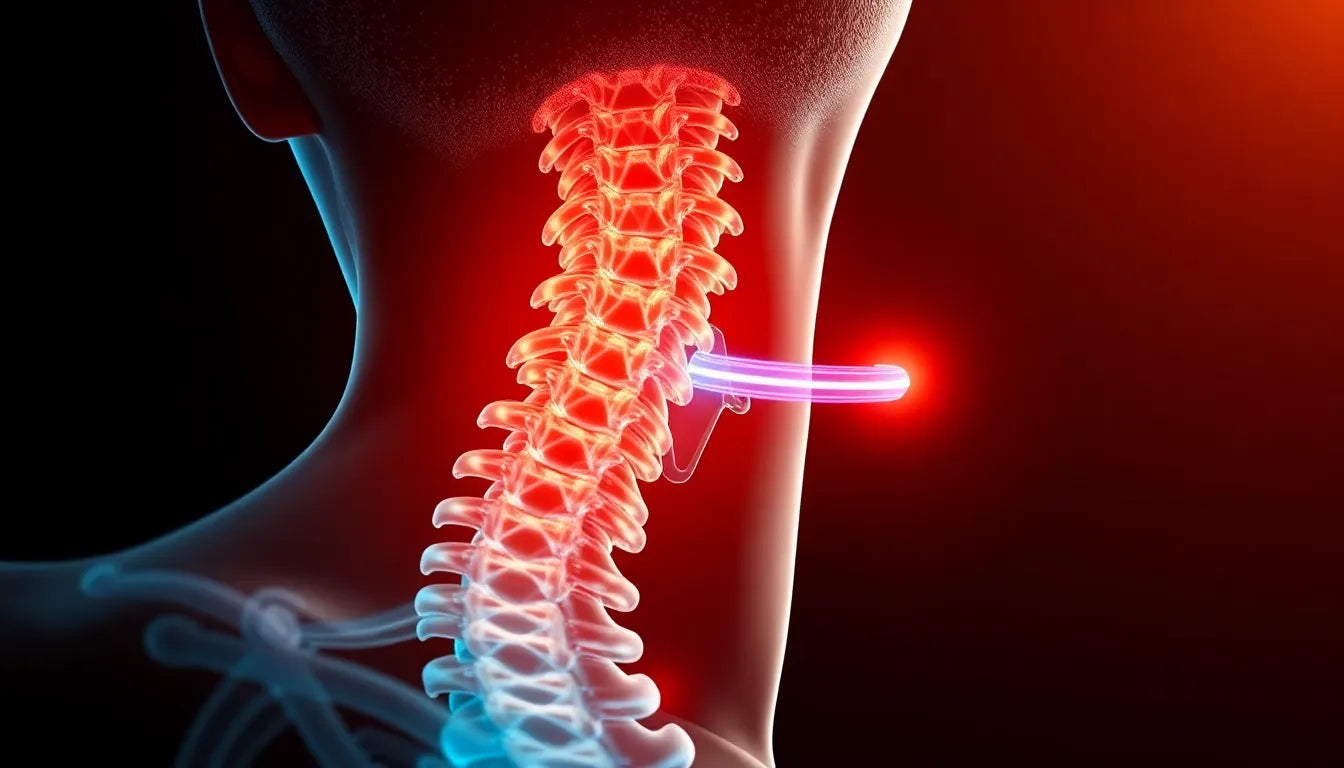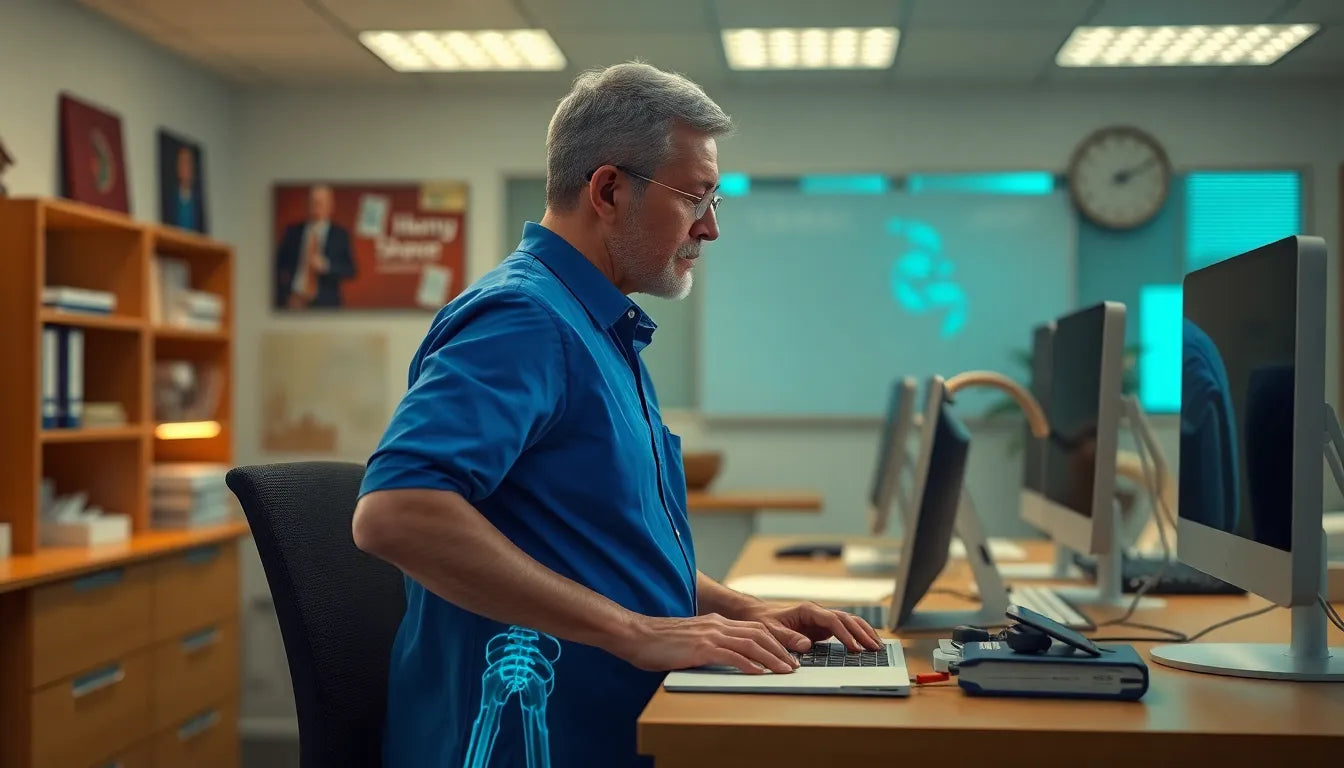Understanding the complexities of a herniated disc can be daunting, yet it's a common condition that affects many individuals. A herniated disc occurs when the soft inner gel of a spinal disc pushes through a crack in the tougher exterior casing. This can lead to symptoms such as back pain, leg pain, and numbness, significantly impacting daily activities and overall quality of life. With its prevalence, finding effective management strategies becomes crucial, and this is where physiotherapy shines as a non-surgical treatment option.
the importance of physiotherapy for herniated discs
Physiotherapy has emerged as a cornerstone in the conservative management of herniated discs. It's often the first line of treatment recommended by healthcare professionals due to its non-invasive nature and focus on symptom relief and functional improvement. Unlike surgical options, which come with inherent risks and longer recovery times, physiotherapy aims to alleviate pain, enhance mobility, and prevent future occurrences through targeted exercises and therapeutic techniques.
The primary goals of physiotherapy for herniated discs include pain reduction, increased range of motion, and strengthening of the muscles that support the spine. By focusing on these areas, physiotherapy not only addresses the immediate discomfort but also works towards long-term recovery and prevention of recurrence. This approach is particularly beneficial as it empowers patients to take control of their recovery through personalized exercise regimens and lifestyle modifications.
why non-surgical approaches are preferred
Non-surgical treatments like physiotherapy are often favored for initial management of herniated discs due to their effectiveness and safety profile. Surgery is typically reserved for severe cases or when conservative measures fail to provide relief. Physiotherapy, on the other hand, offers a proactive approach that focuses on restoring function without the need for invasive procedures.
Through physiotherapy, patients can expect a structured plan that targets pain relief, enhances mobility, and strengthens the spinal support system. This not only helps in managing the current symptoms but also plays a crucial role in preventing future disc issues. Moreover, physiotherapy emphasizes patient education, teaching individuals how to maintain proper posture and ergonomics in their daily lives, which is vital in preventing further injury.
In conclusion, physiotherapy stands out as a powerful tool in managing herniated discs. It provides a comprehensive, non-surgical approach that focuses on symptom relief and functional improvement, making it a preferred choice for many patients. By emphasizing personalized care and empowering patients with knowledge, physiotherapy not only helps in recovery but also in maintaining a healthy spine for the future.
physical therapy as the first-line approach for herniated discs
Physiotherapy is widely recognized as a primary treatment method for managing herniated discs, primarily because of its conservative and non-invasive nature. As a first-line approach, it focuses on providing relief from symptoms while promoting healing and preventing future occurrences. Many patients start to notice improvements within just a few weeks of beginning therapy, with the potential for full recovery over several months. This timeline can vary based on the severity of the herniation and the individual's commitment to their physiotherapy regimen.
goals and limitations of physiotherapy
While physiotherapy is effective in managing the symptoms of a herniated disc, it is important to understand its scope. Physiotherapy does not reverse the anatomical changes caused by the herniation but instead aims to alleviate pain and enhance function. The primary objectives include restoring function, reducing disability, and strengthening the muscles that support the spine to minimize pressure on the affected nerves. By focusing on these areas, physiotherapy helps patients regain mobility and improve their quality of life.
common physiotherapy techniques for herniated discs
targeted exercises
Strengthening and stabilization exercises are key components of physiotherapy for herniated discs. These exercises are designed to support the spine by enhancing the strength and endurance of the core muscles. By improving spinal stability, patients can reduce the strain on the herniated disc and alleviate associated symptoms.
manual therapy and spinal mobilization
Manual therapy techniques, including spinal mobilization, are used to improve joint mobility and reduce pain. These hands-on techniques help to gently manipulate the spine, which can alleviate discomfort and enhance movement. This aspect of physiotherapy is crucial for patients experiencing stiffness and limited range of motion.
traction
Traction therapy involves the use of mechanical or manual means to gently stretch the spine, which can help relieve pressure on the herniated disc. Some evidence suggests that traction may reduce the size of the herniation, although its clinical significance is still debated. Despite this, many patients find traction to be beneficial in reducing pain and improving mobility.
modalities
Various modalities, such as heat, cold, ultrasound, and low-level laser therapy, are employed in physiotherapy to aid in pain relief and inflammation reduction. These techniques can be particularly effective in the early stages of treatment, helping to manage acute symptoms and prepare the body for more active rehabilitation.
patient education
Educating patients about posture and ergonomics is a vital part of physiotherapy for herniated discs. Understanding how to maintain proper posture and employ ergonomic principles in daily activities can help prevent future disc issues. This education empowers patients to make lifestyle changes that support their recovery and long-term spinal health.
In conclusion, physiotherapy offers a comprehensive approach to managing herniated discs by focusing on symptom relief, functional improvement, and prevention of future occurrences. Through a combination of targeted exercises, manual therapy, and patient education, physiotherapy empowers individuals to take an active role in their recovery, ultimately leading to a healthier spine and improved quality of life.
evidence and effectiveness of physiotherapy for herniated discs
The success of physiotherapy in managing herniated discs is well-documented, with numerous studies highlighting its effectiveness as an early intervention. Patients often experience significant improvements in pain levels, functional status, and range of motion within a few weeks of starting treatment. Pain reduction is frequently measured using Visual Analogue Scale (VAS) scores, while functional improvements are assessed with the Oswestry Disability Index. These metrics show that physiotherapy not only alleviates pain but also enhances overall quality of life by improving physical capabilities.
Early intervention with physiotherapy is crucial, as it can prevent the condition from worsening and reduce the need for surgical intervention. The focus on individualized treatment plans ensures that each patient's unique needs are addressed, promoting optimal recovery outcomes. By adhering to prescribed exercises and ergonomic advice, patients can achieve sustainable improvements in their condition.
patient journey and expectations
The journey to recovery from a herniated disc through physiotherapy is gradual and requires patience and dedication. While surgery is often avoided, complete symptom resolution can take several months. It is important for patients to have realistic expectations and understand that consistent participation in physiotherapy sessions and adherence to home exercise programs are key to achieving the best outcomes.
Individualized physiotherapy plans are tailored to each patient's specific condition and lifestyle, ensuring the most effective approach to recovery. This personalization is essential, as it allows therapists to address the particular challenges and goals of each patient, ultimately leading to a more successful rehabilitation process.
case studies and success stories
Consider the case of John, a 45-year-old office worker who experienced severe back pain due to a herniated disc. Through a structured physiotherapy program that included targeted exercises, manual therapy, and patient education on ergonomics, John saw a remarkable improvement in his symptoms. Within three months, his pain levels had decreased significantly, and he was able to return to his daily activities without discomfort.
Another success story involves Sarah, a 30-year-old athlete who suffered a herniated disc during training. By following a comprehensive physiotherapy regimen that focused on strengthening her core and improving her posture, Sarah was able to resume her athletic pursuits within six months, with no recurrence of her symptoms.
These examples illustrate the power of physiotherapy in managing herniated discs and highlight the importance of a committed and personalized approach to treatment.
conclusion
Physiotherapy serves as a powerful tool in the management of herniated discs, offering a non-surgical approach that focuses on symptom relief and functional improvement. By combining targeted exercises, manual therapy, and patient education, physiotherapy empowers individuals to take control of their recovery and maintain a healthy spine. The integration of ergonomic practices further enhances the effectiveness of physiotherapy, aiding in both recovery and prevention of future occurrences.
frequently asked questions
What is a herniated disc, and what causes it?
A herniated disc occurs when the soft inner gel of a spinal disc pushes through a tear in the tougher outer layer. Common causes include injury, repetitive strain, and degeneration due to aging.
How does physiotherapy help with a herniated disc?
Physiotherapy helps by using targeted exercises and therapies to alleviate pain, improve mobility, and strengthen the muscles that support the spine, reducing pressure on the affected nerves.
How long does it take to recover from a herniated disc with physiotherapy?
Recovery time can vary, but many patients see improvement within weeks, with full recovery often taking several months. Factors influencing recovery speed include the severity of the herniation and adherence to the physiotherapy regimen.
Can physiotherapy prevent future herniated discs?
Yes, physiotherapy can help prevent future herniated discs by strengthening the muscles that support the spine and educating patients on proper posture and ergonomic practices.
Is physiotherapy effective for all types of herniated discs?
Physiotherapy is effective for many types of herniated discs, but the approach may vary based on the severity of the condition and individual patient factors. A personalized treatment plan is essential for optimal results.
Sources
- Mass General Brigham. "Herniated Disc Treatment Options."
- Physiopedia. "Herniated Disc."
- American Physical Therapy Association (ChoosePT). "Physical Therapy Guide to Herniated Disc."
- The Jackson Clinics. "Understanding Herniated Discs and Physical Therapy."
- LWW Journal. "Effectiveness of Physical Therapy for Lumbar Disc Herniation."
- Scottsdale PT Performance. "Outcomes of Physical Therapy for Herniated Discs."
- Spine.MD. "Safe Movement and Herniated Disc Management."


















